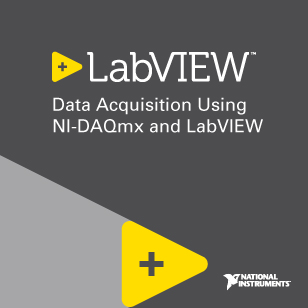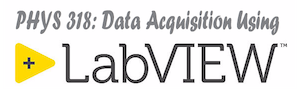 Explore the fundamentals of data acquisition using sensors, NI data acquisition hardware, and LabVIEW. Learn the basics of hardware selection, including resolution and sample rate, and the foundation of sensor connectivity, including grounding and wiring configurations. Use the NI-DAQmx driver to measure, generate, and synchronize data acquisition tasks. Program finite and continuous acquisitions, as well as best practices in hardware/software timing, triggering, and logging.
Explore the fundamentals of data acquisition using sensors, NI data acquisition hardware, and LabVIEW. Learn the basics of hardware selection, including resolution and sample rate, and the foundation of sensor connectivity, including grounding and wiring configurations. Use the NI-DAQmx driver to measure, generate, and synchronize data acquisition tasks. Program finite and continuous acquisitions, as well as best practices in hardware/software timing, triggering, and logging.
Data Acquisition Using NI-DAQmx and LabVIEW is available to PHYS 318 students as part of the LabVIEW Student License.
Access Using NI-DAQmx CourseLessons for this course are grouped into three main categories:
- Measurement Fundamentals
- NI-DAQmx Programming in LabVIEW
- Sensors and Signals



